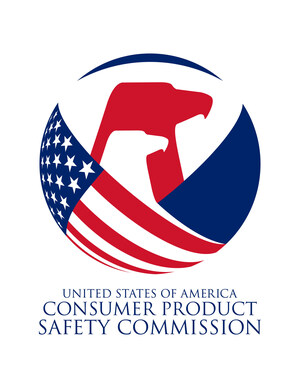African-Americans disproportionately affected by generator-related CO poisonings
WASHINGTON, Dec. 19, 2013 /PRNewswire-USNewswire/ -- Carbon monoxide (CO) is an invisible killer, and portable gas generators emit a lot of CO. Portable generators were involved in the majority of carbon monoxide deaths involving engine-driven tools from 1999 through 2012. At a carbon monoxide safety event in Chicago today, U.S. Consumer Product Safety Commission Acting Chairman Robert Adler announced that a new agency report finds that portable generators were linked to more than 85 percent of non-fire CO deaths associated with engine-driven tools, or 800 out of 931 deaths, during that 14-year period. Most of the deaths have occurred since 2005, when Hurricane Katrina and a series of winter ice storms hit the U.S.
(Logo: http://photos.prnewswire.com/prnh/20030904/USCSCLOGO)
CPSC's report also found that African Americans died at nearly twice their proportion of the population. CPSC staff found that 23 percent of generator-related fatalities involved African Americans. African Americans make up about 12 percent of the U.S. population, according to the U.S. Census Bureau.
Men of any race were most likely to die from CO poisoning from generators, accounting for 73 percent of the deaths.
Most of the generator fatalities, or 74 percent, occurred at fixed-structure homes. Many of these incidents involved generators that were operated in the home's living space.
Portable generators have fuel-burning engines. Engine exhaust contains high levels of poisonous carbon monoxide, which can be fatal within minutes if used indoors, or in enclosed spaces, such as garages, crawlspaces, sheds, or too close to the home.
CPSC urges consumers to use generators only outside, and at least 20 feet from the home, away from windows and vents, to allow proper ventilation. Generators should never be used inside the house, basement, garage, shed or crawlspace, even if there is ventilation.
Half of the generator-related deaths happened in the four coldest months of the year, November through February, because of generator use during power outages. Electricity turned off by the power company due to a bill dispute or non-payment also was a factor in some generator-related deaths.
CPSC is working to make generators safer. In 2006, the Commission issued an advance notice of proposed rulemaking (ANPR) to address the carbon monoxide poisoning hazard associated with portable generators.
In 2007, the Commission voted to require manufacturers to place a prominent "danger" label on newly-manufactured or imported portable generators with a warning, "Using a generator indoors can KILL YOU IN MINUTES."
Last fall, a study by CPSC found that a generator's CO emission rate could be cut dramatically by using closed-loop fuel injection and a small catalyst—the same emission control technology used on motor scooters and small motorcycles. This emission control technology was found to increase significantly a consumer's escape time when running a generator in a garage from the current eight minutes to 96 minutes. CPSC staff is considering the results of this study, other research and stakeholder feedback, as the staff develops recommendations for next steps in the rulemaking proceeding.
CPSC urges consumers to use caution with all engine-driven tools. CPSC's report also looked at carbon monoxide-related incidents and deaths involving other engine-driven tools, such as lawnmowers, power washers and yard trimmers. CPSC staff found 126 CO deaths with engine-driven tools—other than generators.
Non-Hispanic whites died from CO poisoning from non-generator engine-driven tools at a much higher rate (89 percent) than their proportion of the population (67 percent). Men accounted for 97 percent of the CO deaths from engine-driven tools.
Proper usage of CO-emitting tools is just one vital safety step. For this reason, CO alarms are critical lifesaving devices. They should be installed on each level of the home and outside sleeping areas.
CPSC staff found that a CO alarm was present in only about eight percent of the cases involving a CO death with engine-driven tools, and most of the CO alarms were not working at the time of the fatal incident involving engine-driven tools. Proper installation and maintenance of CO alarms saves lives.
The U.S. Consumer Product Safety Commission is charged with protecting the public from unreasonable risks of injury or death associated with the use of thousands of types of consumer products under the agency's jurisdiction. Deaths, injuries, and property damage from consumer product incidents cost the nation more than $1 trillion annually. CPSC is committed to protecting consumers and families from products that pose a fire, electrical, chemical or mechanical hazard. CPSC's work to ensure the safety of consumer products - such as toys, cribs, power tools, cigarette lighters and household chemicals – contributed to a decline in the rate of deaths and injuries associated with consumer products over the past 40 years.
Federal law bars any person from selling products subject to a publicly-announced voluntary recall by a manufacturer or a mandatory recall ordered by the Commission.
To report a dangerous product or a product-related injury go online to www.SaferProducts.gov or call CPSC's Hotline at (800) 638-2772 or teletypewriter at (301) 595-7054 for the hearing impaired. Consumers can obtain news release and recall information at www.cpsc.gov, on Twitter @OnSafety or by subscribing to CPSC's free e-mail newsletters.
Media Contact
Please use the phone numbers below for all media requests.
Phone: (301) 504-7908
Spanish: (301) 504-7800
Release Number: 14-068
SOURCE U.S. Consumer Product Safety Commission
WANT YOUR COMPANY'S NEWS FEATURED ON PRNEWSWIRE.COM?
Newsrooms &
Influencers
Digital Media
Outlets
Journalists
Opted In





Share this article